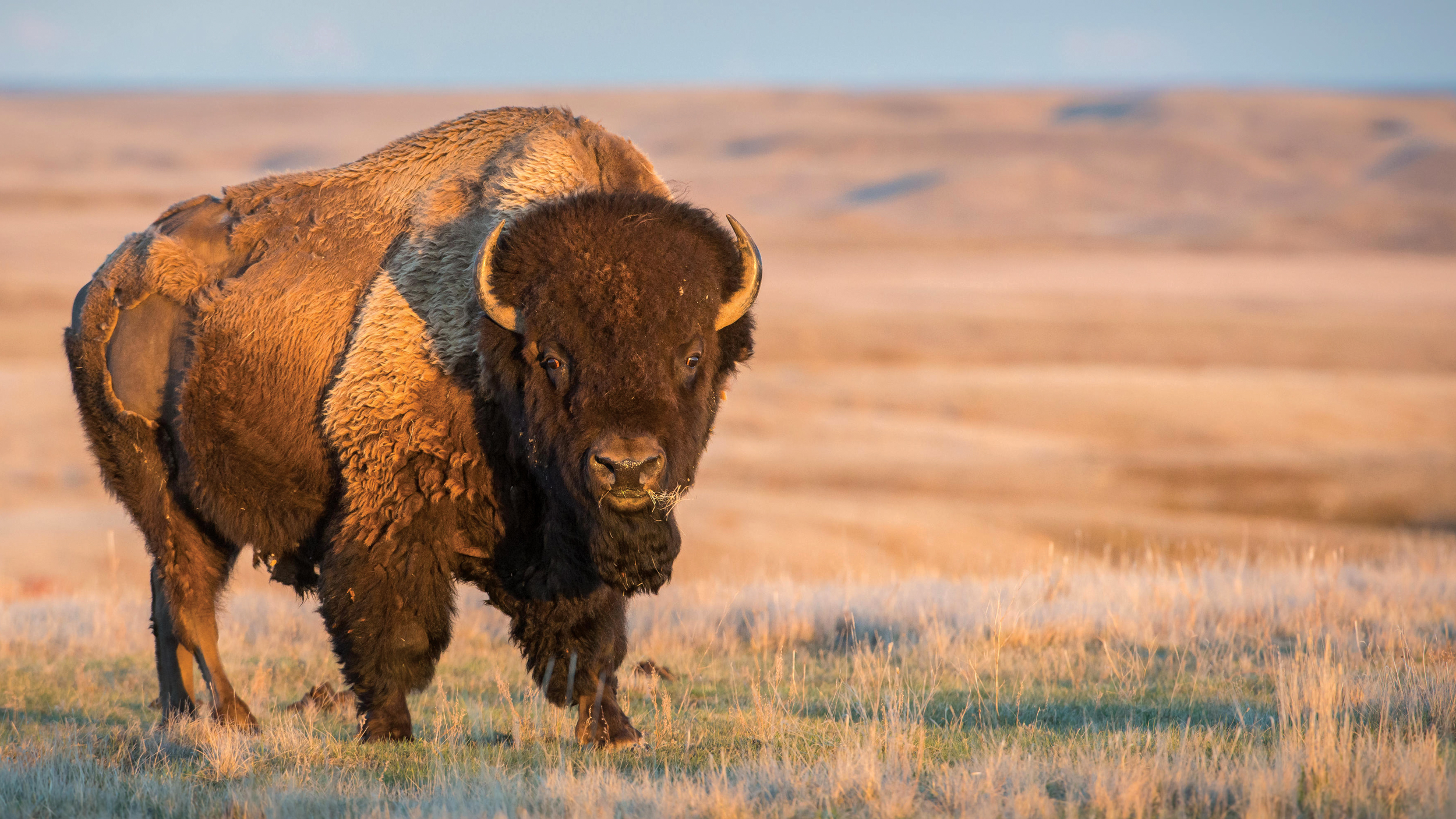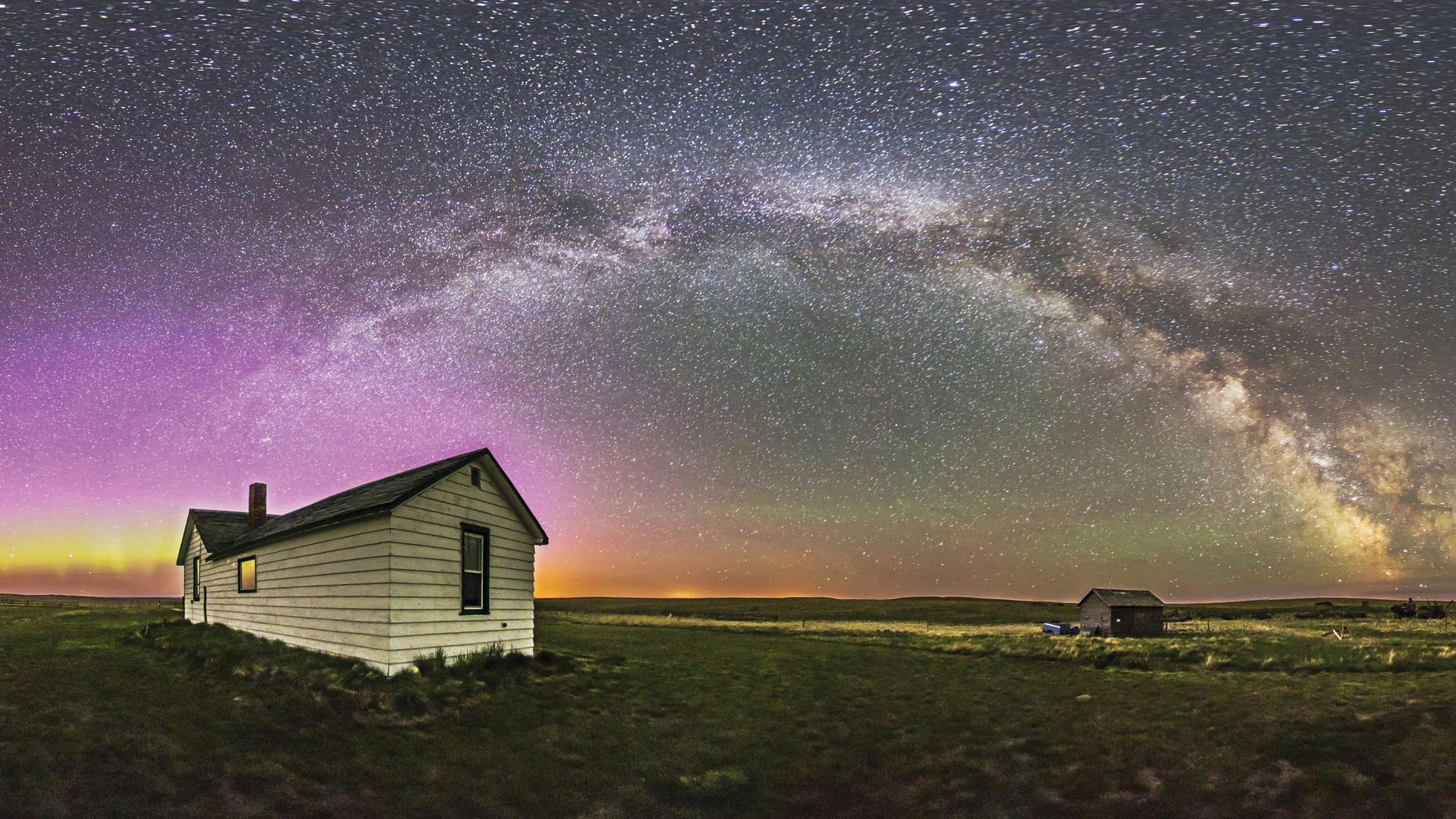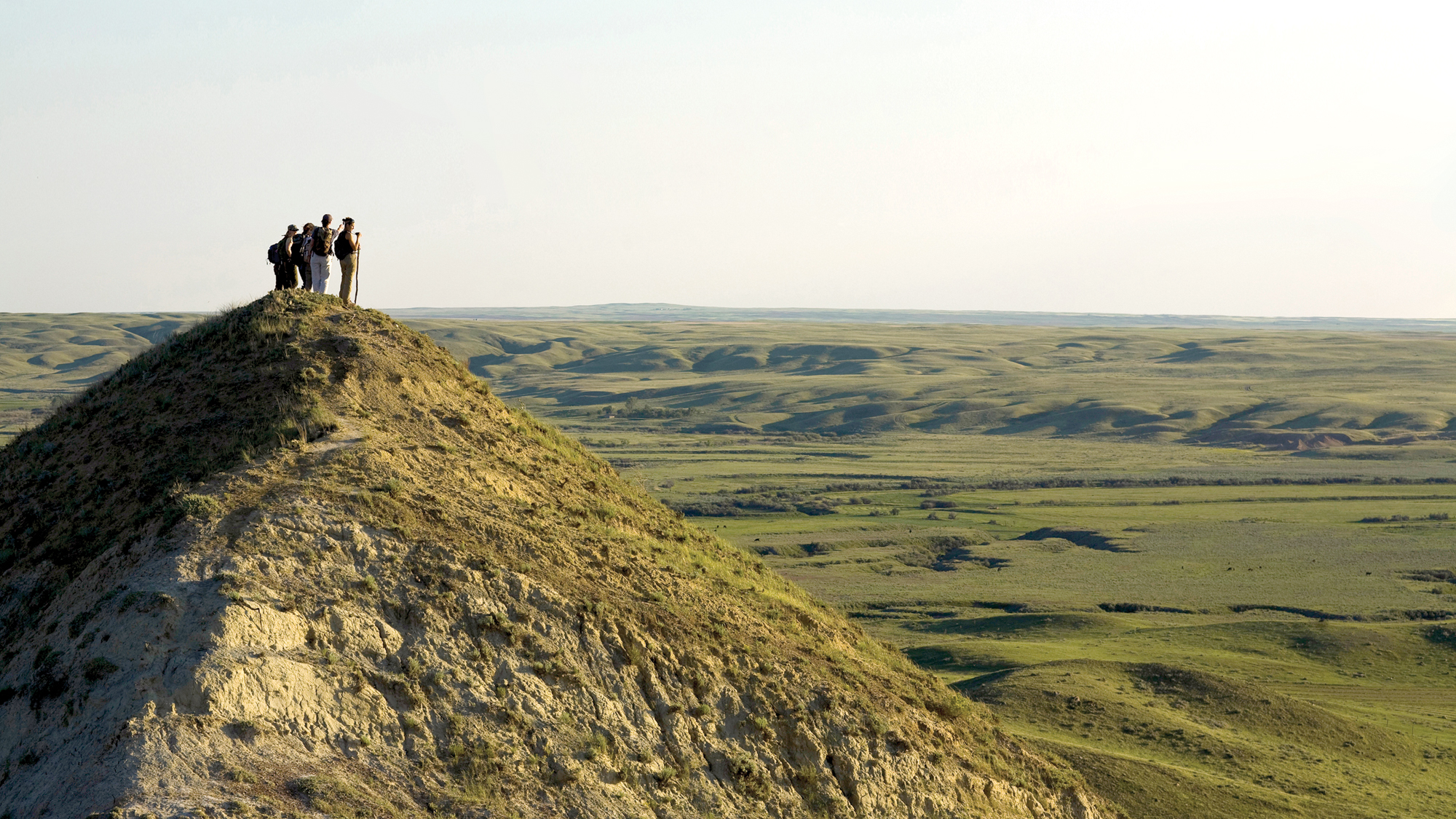As we leave the seemingly endless expanse of cultivated croplands, the landscape dramatically transforms into a sea of grass blanketing gently rolling hills. But this isn’t your garden-variety lawn grass; it’s a rich mix of native prairie species that have thrived here for millennia.
Grass isn’t the only thing to thrive in these parts. Entering Old Man on His Back Prairie and Heritage Conservation Area (OMB), south of Cypress Hills, wildlife flourishes. A couple of mule deer bound across the road in front of us; pronghorn rest in a hollow a short distance away; and a horned lark lands on a fence post. Driving over the next ridge, we spot the most prized specimen of the park: Primeval-looking bison graze on a tract of green stretching to the horizon. Looking beyond the road and fence line, it’s easy to imagine this pristine landscape long before settlers ventured to southern Saskatchewan.
As a Saskatchewan flagship project of the Nature Conservancy of Canada (NCC), OMB protects one of the world’s most endangered natural landscapes. “People often think of rainforests and coral reefs as the planet’s most critical habitats in need of conservation,” says Dan Kraus, NCC senior conservation biologist. “But grasslands are the world’s most endangered ecosystem. In Saskatchewan, nearly 80 percent of our grasslands have been converted.”
This rare piece of native prairie was once the ranch of Peter and Sharon Butala. It was this special land that inspired Sharon’s bestselling books celebrating the Prairies and ranch life. When they retired, the couple was determined to protect their beloved land. The Interpretive Centre, located in the Butala’s old ranch yard, tells the story of this property and the importance of the mixed-grass prairie.
MORE TO READ
Six steps toward more eco-conscious travel
At one time, millions of wild buffalo roamed the Great Plains. Wandering through the hills, one can see tipi rings and medicine wheels left by ancestors of the Nekaneet Cree—a First Nation that followed the great herds, relying on North America’s largest land mammal for food, clothing and shelter. Canada’s western expansion, coupled with the spread of the continental railway in the 19th century, facilitated a massive buffalo slaughter, nearly driving the species to extinction.

For the past decade, the NCC has worked to bring back the bison, a direct descendant of the North American buffalo. What started with a few genetically pure animals (free from cattle DNA) has grown to a herd of 100.
Visitors can wander the pastures of the 5,297-hectare ranch on foot, being careful to avoid approaching bison. For a guided experience, join OMB interpreter Alan Dumontel when he’s available. Although bison are the big draw, you could also spot rare species, like the swift fox, ferruginous hawk and burrowing owl, plus other critters.
When darkness falls, OMB is equally spectacular. Free of light pollution in its sparsely populated setting, the area was designated a Nocturnal Preserve by the Royal Astronomical Society of Canada, making it the first such NCC property in Canada. To enjoy the dark sky—or the magical light of sunrise or sunset on the prairie—visitors can camp near the Interpretive Centre. But keep in mind: It’s not a purpose-built campground, so facilities are limited.
MORE TO READ
Our favourite off-the-Rockies hiking trails in Alberta
The conservancy encourages visitors to stay over during the annual summer Campout for Conservation. Volunteers help with various projects, such as building nesting platforms for ferruginous hawks; installing caps on metal fence posts to prevent small birds from falling into the hollow centres; or constructing bat boxes to assist the endangered little brown bat population. After sundown, Royal Astronomical Society members haul out their impressive telescopes for the ultimate stargazing experience.
While the leading pressure on Saskatchewan grasslands is their conversion to croplands, some regions face additional challenges. To see one such area, we drive straight north of Regina. After about 40 kilometres, Highway 6 begins its sudden descent into the magnificent Qu’Appelle Valley. Near the rim, we turn at the sign for Fairy Hill Nature Trail. It’s the centrepiece NCC property, encompassing 665 hectares of valley slopes, uplands and wetlands.
The Qu’Appelle Valley ranks among Saskatchewan’s best-known and most beautiful landscapes—a mosaic of hills, woodlands and open grasslands dotted with wildflowers. It’s also a fertile flood plain prized for agriculture. But crop conversion is just one pressure here. A significant threat also stems from the stunning scenery itself: Cottage development is spreading at a rapid rate. With its untouched landscape and proximity to a major urban centre, Fairy Hill has become a vacationer’s paradise.

The five-kilometre-loop trail starts on the rim, but before long we wind our way down the slopes over grassy meadows and through aspen wood-lands. Outstanding views abound, including vantage points over wetlands often alive with ducks and shorebirds—and sometimes great blue herons or pelicans. While scenery is the biggest draw, Fairy Hill is just as significant for its wildlife habitats. The varied landscapes support birds, ranging from waterfowl to downy woodpeckers to northern harrier hawks. It’s also not unusual to see coyotes and deer, and the occasional moose, elk and black bear. Most importantly, the area is home to more than 30 endangered plants and animals, including the loggerhead shrike, Sprague’s pipit, northern leopard frog and bigmouth buffalo fish.
The creatures you encounter may vary on each visit, but it never fails to bring a fresh appreciation for the wonders of Saskatchewan’s native grasslands.
GRASSLANDS 101
A trip to OMB is best when the Interpretive Centre is open: weekends from mid-May through September.
Free range: NCC maintains 170 properties in Saskatchewan. They’re free to visit (foot access only), but most do not have formal visitor facilities or designated trails.
Knowledge is power: Check out natureconservancy.ca/Saskatchewan to learn more about NCC’s conservation efforts in the province.
Easier entry: Visit an AMA centre to save $10 on the purchase of a family annual Parks Canada Discovery Pass.
